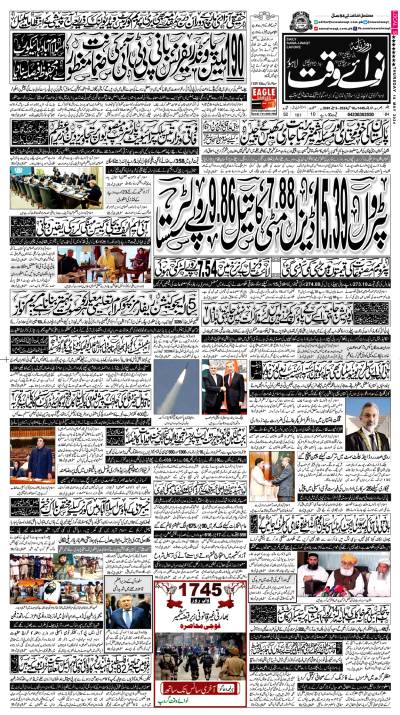From global pariahs to unexpected allies, the international standing of the Islamic Emirate of Afghanistan has undergone a significant shift. Given that several countries have already recognized the IEA-led government’s de facto rule in Afghanistan, their newfound diplomatic support is no longer a complete surprise, although it is still a significant shift from the international community’s previous stance towards the IEA – Indeed, a stark contrast to the Taliban’s isolation in the 90s, with only Pakistan, Saudi Arabia, and the UAE acknowledging their rule.
After ruling Afghanistan from 1996 to 2001 with little support from the international community, the IEA returned to power in Kabul nearly two years ago. As the world watched the IEA reclaim power in Afghanistan after the United States longest war, the focus shifted to what the future holds for the country. Amidst all the chaos, what remained largely unnoticed was the web of trade deals and diplomatic relationships the IEA had been building with regional countries since their rise to power in Afghanistan.
As the IEA tightens its grip on Afghanistan, the world watches in awe as neighboring countries like Russia, China, and Pakistan rush to strike multi-million dollar deals with the new regime. China has already secured a 25-year contract to extract oil from the Amu Darya Basin and a $3 billion deal for Afghanistan’s copper deposits, while Russia has seen exports to Afghanistan skyrocket to a monthly value of $10.3 million.
Pakistan and Afghanistan may have had their ups and downs, but the longest border between them remains a bustling trade route, with Afghanistan boasting a $79 million surplus with Pakistan. Now, with the revival of the annual Pakistan-China Strategic Dialogue and the recent visit of Afghanistan’s Muttaqi, a new trilateral relationship is set to take shape, paving the way for North, South, and Central Asian regional connectivity. With discussions likely covering everything from security and border issues to the levy problem, the meeting is an opportunity to address the pressing concerns to strengthen the bilateral relationship.
Currently, Afghanistan’s $85/ton tax on coal exports to Pakistan has raised energy and input costs for vital sectors, such as textiles and cement. Meanwhile, Afghan trucks can freely enter Pakistan for trade, while Pakistani trucks are unfairly restricted. To unlock the full potential of their geography and robust economic ties, Pak-Afghan free trade and transit must be restored without political tensions. This will not only drive economic growth and mutual gains but also foster regional peace and stability.
As Pakistan and Afghanistan work to restore free trade and transit, other South Asian countries are also looking to strengthen their economic ties with Afghanistan. India, for instance, has registered trade worth $45 million with Afghanistan over the past year, according to the Indian Commerce Ministry. Meanwhile, Iran remains a key trading partner despite a 40 percent drop in imports from Afghanistan due to market demand. Nonetheless, Iran still accounts for $1.2 billion in trade.
In this rapidly changing geopolitical landscape, the question remains: where do the United States and the West fit in? With the regional economic opportunities growing, it would be unwise to assume that the IEA will depend on recognition or support from the West. Some voices within the US are already calling for engagement with the new regime, recognizing that human rights concerns alone may not be enough to secure US interests in the region. Hence, with the shifting geopolitical landscape in Afghanistan, the West must adapt its approach to engage with the IEA if it wants to remain relevant.
Moreover, the conflicting signals surrounding the international community’s policy towards the IEA in Afghanistan have created confusion and underscored the need for a unified and coherent approach. This has also been observed as the United Nations Secretary-General has hosted a meeting in Doha recently on engagement with IEA post-recent bans on Afghan women working with the UN and other aid organizations.
As the geopolitical landscape shifts, the US and the West may need to reassess their stance on the IEA and explore avenues for constructive engagement. Relying solely on human rights concerns as leverage for not recognizing the IEA-led government may prove to be shortsighted in the long run, as the economic benefits of regional connectivity become increasingly apparent. Therefore, in navigating the complex and delicate situation in Afghanistan the world must adopt a delicate balancing act that considers human rights, diplomatic relations, and economic growth.
For this purpose, any engagement with the new regime must take into account the country’s intricate political, social, cultural, and economic landscape and involve collaboration with local, regional, and international stakeholders. In addition to the Asians, and Middle Easterns, Europeans have already shown interest in building ties with Afghanistan, while some voices in the US are advocating for establishing relations with the IEA government.
Now, it is crucial to identify pathways that align with the needs and priorities of all stakeholders before any engagement can take place. Additionally, the IEA’s focus on bilateral trade relationships presents both opportunities and challenges as it seeks to expand its economy and integrate with the wider world. Only a comprehensive approach that maps outlines of conflict and reconciliation and identifies the needs of all stakeholders can chart a path towards sustainable engagement with Afghanistan and contribute to regional stability and the improvement of the lives of Afghan citizens.
Friday, May 17, 2024
Afghanistan: A delicate balancing act
Rain Damage
May 16, 2024
LESCO Next
May 16, 2024
Propaganda War
May 16, 2024
Heat Alert
May 15, 2024
Tax Reform
May 15, 2024
2022 Floods - Road to Recovery
May 16, 2024
Success of Lunar Mission
May 15, 2024
Service disruption
May 15, 2024
Weather Crisis
May 15, 2024
Reforming the Wheat Purchase System
May 15, 2024
ePaper - Nawaiwaqt
Advertisement
Nawaiwaqt Group | Copyright © 2024





